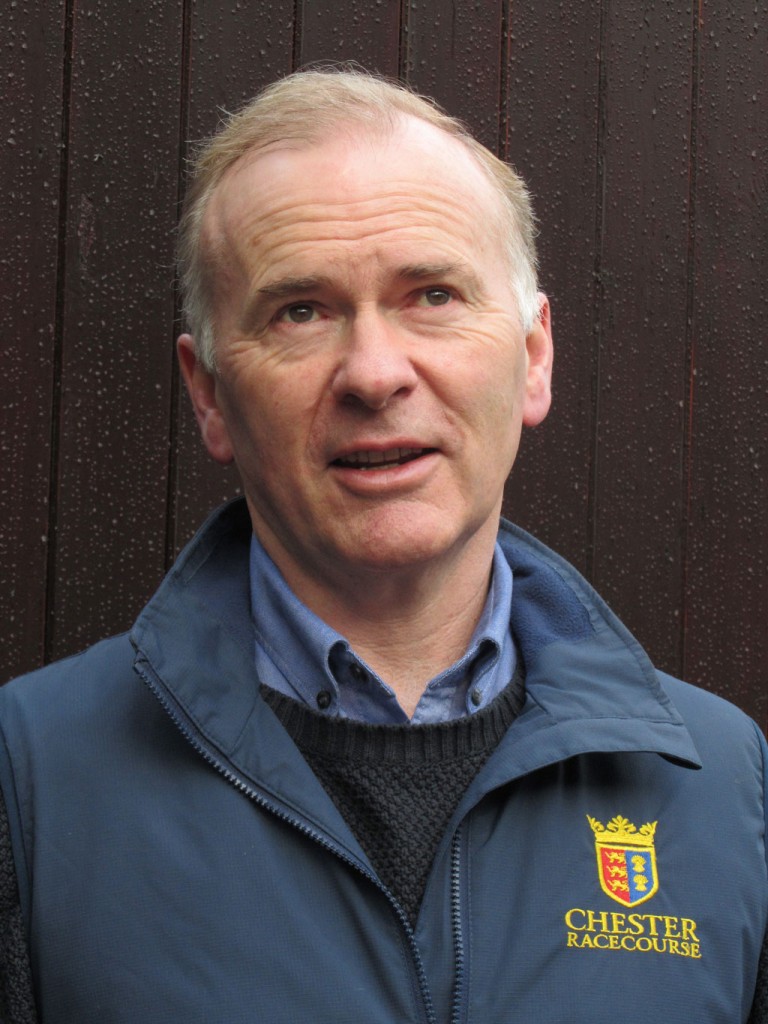
A story from the weekend. The Guardian are running a series of Visit England supplements currently to promote destinations around England. I did the Chester story.
The final edit was cut down quite heavily from the original, so here’s the original copy, incorporating the interview with racecourse historian Chris Clayton (pictured above).
Chester Races packs them in: 250,000 people annually over the 15-event racing season. But most race-day revelers are probably unaware that Chester Racecourse is the oldest racecourse in Britain and a hotbed of historical intrigue.
“Stand here,” says racecourse guide Chris Clayton, resplendent in his pale-blue guide’s gilet as we approach Gate Nine on the non-race-day tour. We’re overlooking the course from the medieval city walls. “This is my favourite view,” explains the Liverpool-born history and archaeology boffin, whose day job involves managing building projects for the course. “For a cross-section of racecourse history from Roman times to the modern day, it’s all alive here.”
The gate is now the main entrance to the Dee Enclosure but it overlooks the old Roman port build on the banks of the city-intersecting River Dee. The Romans established Chester as a safe anchorage point for access to the Irish Sea and it remained a bus trading port through the medieval period until silting left the land, known as the Roodee, as a public space.
Chris leads us onwards, taking the steps down the side of Restaurant 1539 to the Tattersalls Stand with views over the narrow home strait. The restaurant’s name refers to the first recorded race on February 9, 1539. Horse racing was introduced at Easter initially to replace the annual Shrove Tuesday football match, banned in 1533 for being too violent.
“Chester’s then Lord Mayor, Henry Gee, gave his consent,” says Chris. “That’s why we still talk about going to the gee-gees.”
As well as racing, the Roodee has also hosted public events from the Royal Agricultural Show of 1858 to Buffalo Bill and Geronimo Wild West Show in 1903. These days, events include the more sedate Chester Food, Drink & Lifestyle Festival at Easter and the Chester Rocks music festival in summer.
The tour ends at the Parade Ring, where famous jockeys and horses from Willie Carson to Shergar have paraded for their adoring public. Chester’s May meet acts as a trial run for the Epsom Derby and it attracts the Cheshire set en masse. “Henry Gee would be amazed to see how the races have become a major event on the city’s social calendar,” says Chris.
“I knew nothing about racing when I started here 12 years ago, “ adds Chris, a Chartered Surveyor by trade and confirmed non-horsey type. “The history of Chester Races fascinates me but, even after all these years, my equine knowledge is still limited.”
Read the published story, A Day at the races in Chester.
And post your comments below.



